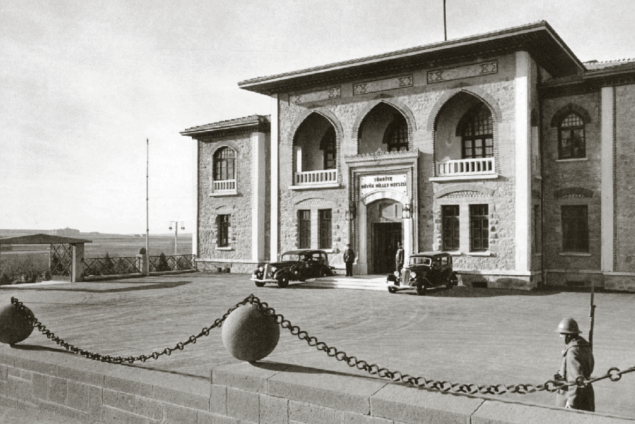
The second Assembly building in operation
As the search continued for a suitable place to convene the first Assembly in Ankara in 1920, a decision was made to use the club building of the Committee of Union and Progress, which had never been finished due to lack of funds. Completed with much national excitement and effort to ensure the Assembly was inaugurated in due time, the building was rather small and comprised only nine rooms and a large hall. The first Assembly building was used until October 18, 1924. However, unable to meet the increasing demands of the assembly, it gave way to the second Assembly building as of that date.
Designed by architect Vedat Bey (Tek) the new building, as the former one, was also located in the Ulus district of Ankara. Originally, it was designed as the deputy club and the meeting place of CHP per Atatürk’s request. Comprised of a basement floor and two full floors, the building’s construction began in 1923. The General Assembly Hall was at the center of the building. The hall also included balconies and boxes for the audience. The ceiling of the upper floor was decorated with Ottoman motifs, whereas the façade featured a large entrance, arch bridges, and canopies.
For thirty-six years, the building witnessed many momentous events in the history of the Turkish Republic, including the reforms and revolutions of Atatürk, critical decisions, treaties increasing Turkey’s influence on the international level, and transition to a multi-party system. In 1961, the Grand National Assembly of Turkey moved to its current building.
Having stood testimony to the early years of the Republic, the second Assembly building is currently being used as the Museum of the Republic